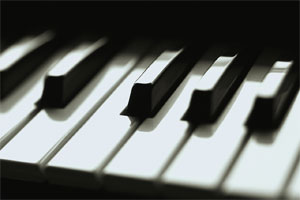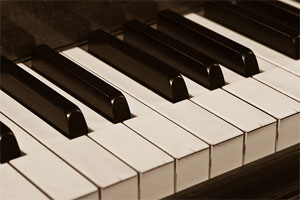This is probably one of the most fiercely debated topics regarding Steinway pianos. There is a ton of misinformation online as well as varying degrees of opinions. Not everyone is going to agree on this topic, but I will share my perspective from a lifetime with Steinway pianos. So let’s dive right into this hotly contested debate, is Teflon on Steinway Pianos bad?
In 1972 Steinway & Sons was sold to CBS and they owned the company until 1985. At some time during this period in Steinway’s history, the felt parts of the action were replaced with Teflon. Eventually, they abandoned this practice and went back to felt – not without some public outcry. Today, some people will see older Steinway pianos with Teflon and become adamant about replacing it, but is it really such a big problem?
There is no simple yes or no answer to this question. Teflon has many different characteristics then felt and one of the reasons Steinway decided to use it was that it is much more durable and robust then felt. One of the big problems Steinway ran into with Teflon is that many technicians didn’t know how to work with it. The vast majority of the world’s actions were built with felt and replacing it with a new material created some confusion. Unless a technician is familiar with Steinway Teflon actions, they might not be able to adjust it properly.
If you have a Steinway piano with Teflon in it and it’s in good shape, all you need is a good technician who can maintain it. There is really no reason to replace the Teflon if you have no problems. Now, there are cases where you will have to replace Teflon.
Teflon does cause some unwanted problems and if you are experiencing any of these you will need to get it replaced. Telfon is rigid but wood is susceptible to expanding and contracting with the weather. If you put a Steinway piano with Teflon in an extreme environment with wild swings in temperature – from dry to humid and from hot to cold – it’s possible the wood could crack. This can cause unwanted noises that could be created by the spaces between the Teflon bushings and the wood. This is what gave Teflon a very bad reputation; it’s not made for extreme environments.
If you live in a stable environment, you probably won’t have any negative issues with Teflon You will probably be fine as long as you have a properly trained technician.
If you feel that you want to replace the Teflon in your action, you can. If you have any concerns or qualms about it and you have the money, you should simply do what makes you happy. Does it need to be replaced? Unless you live in an extreme environment, the Teflon is old, or you can’t find the right technician, probably not. I personally don’t have any problems with Teflon parts but that’s my opinion and I’m sure there are plenty of varying viewpoints.
Thanks again for joining me Robert Estrin Robert@LivingPianos.com (949) 244-3729












